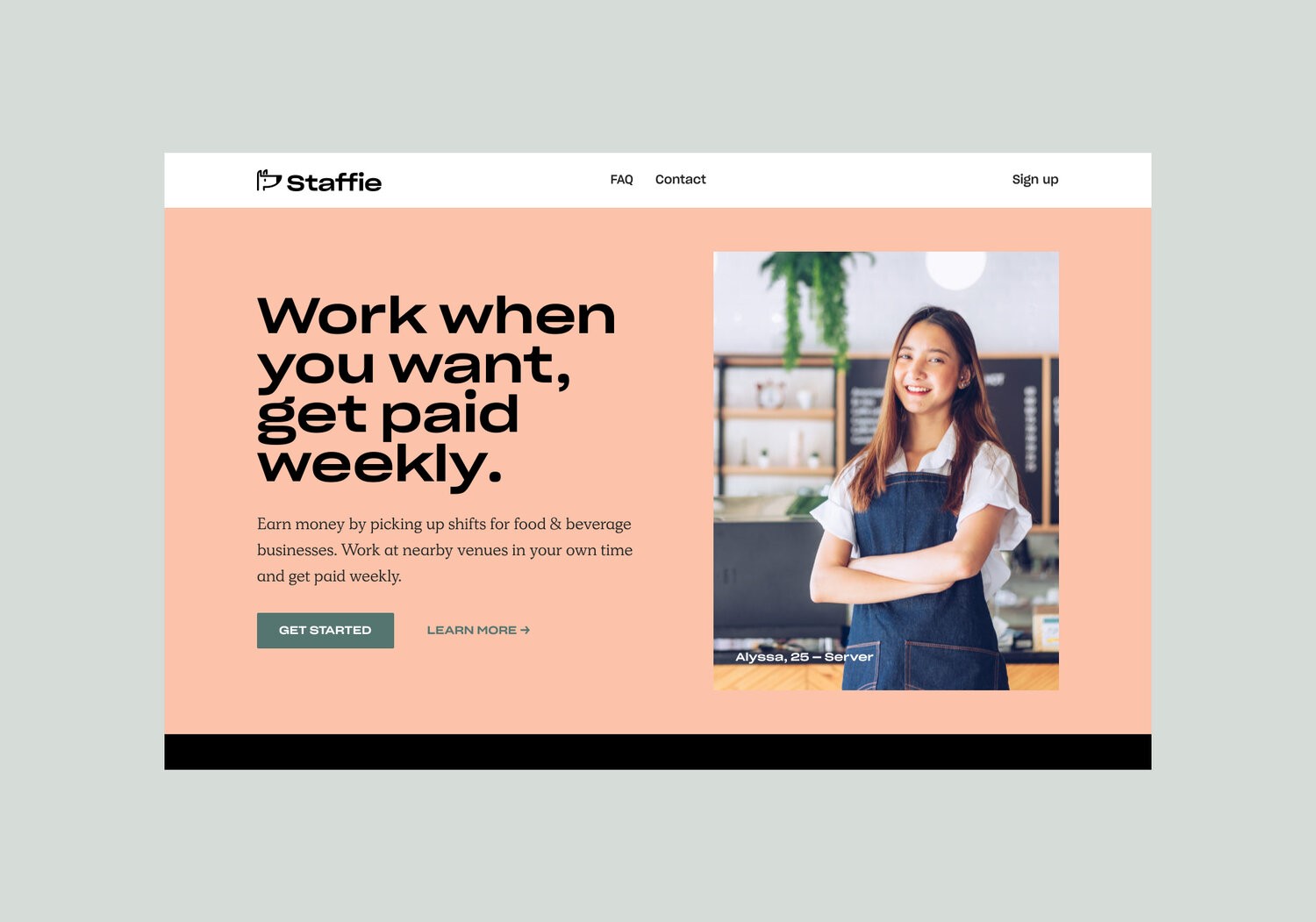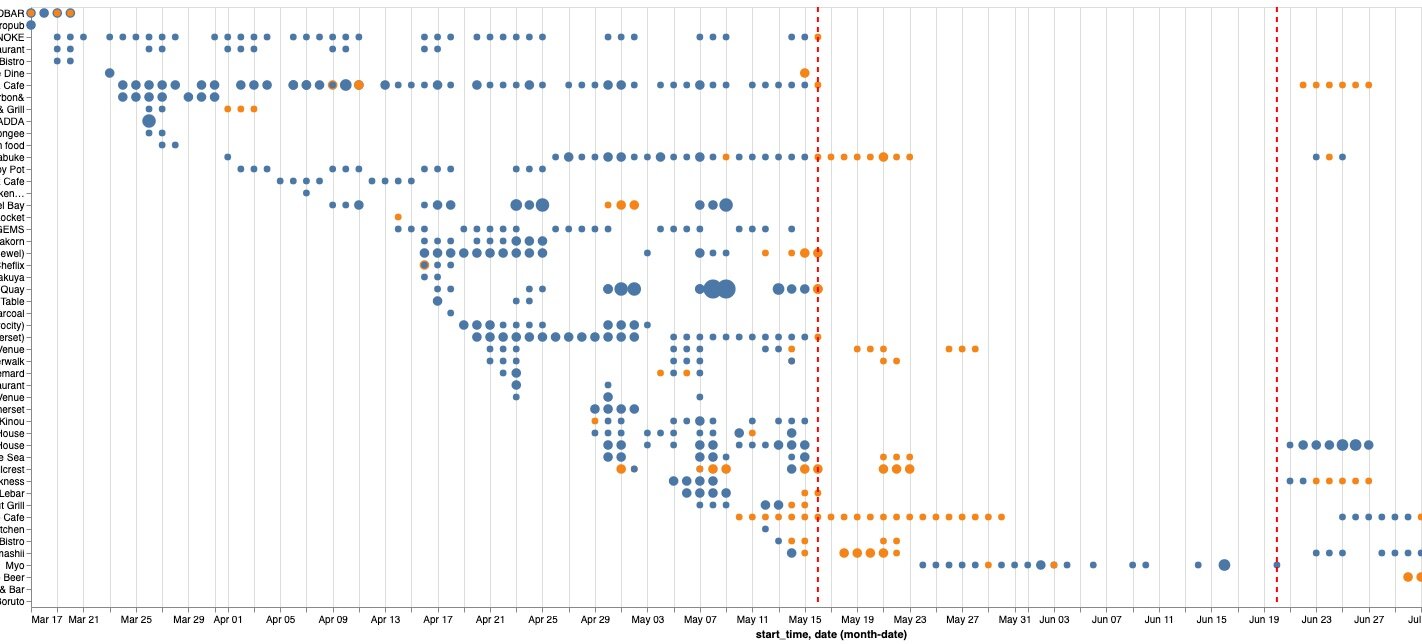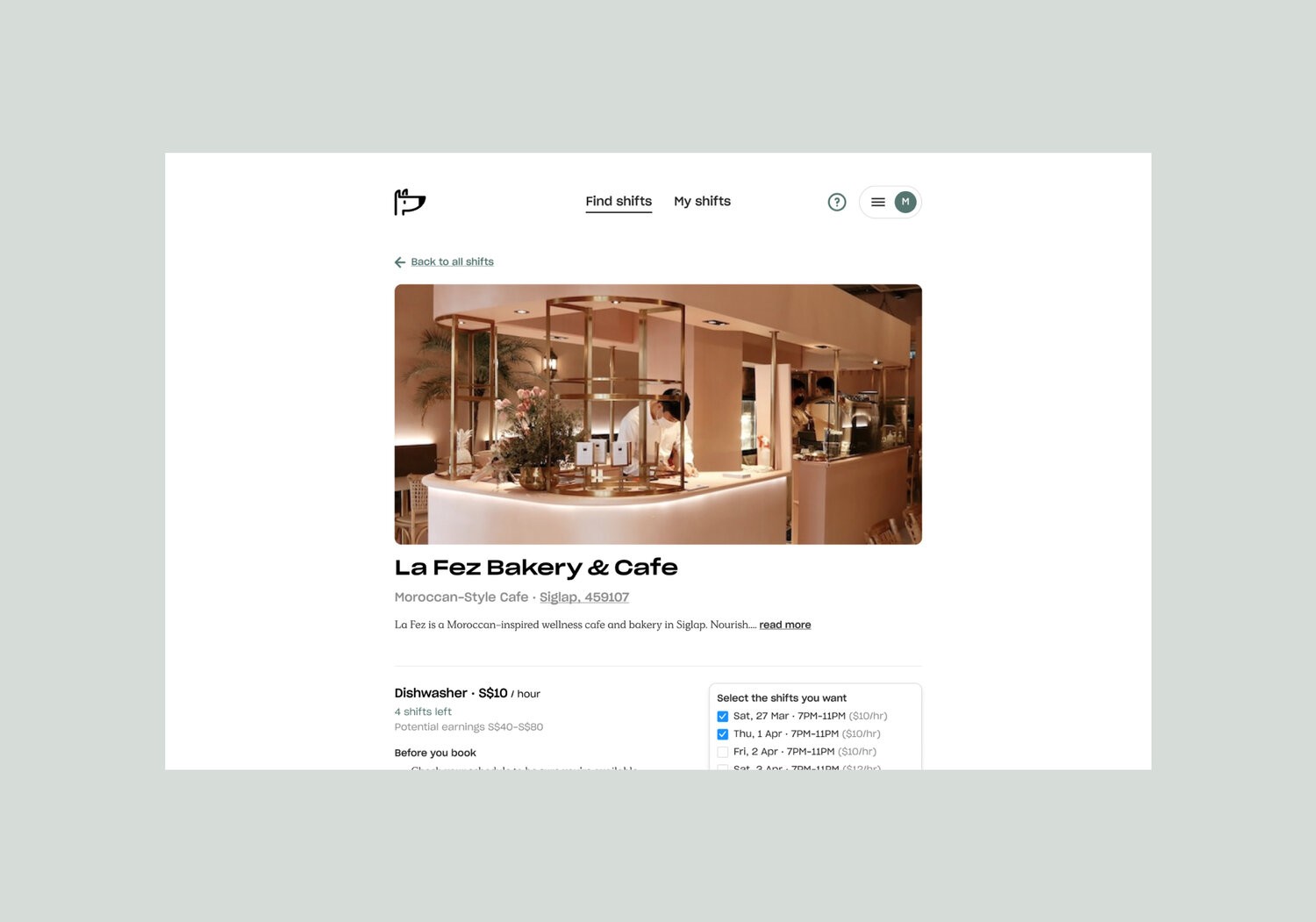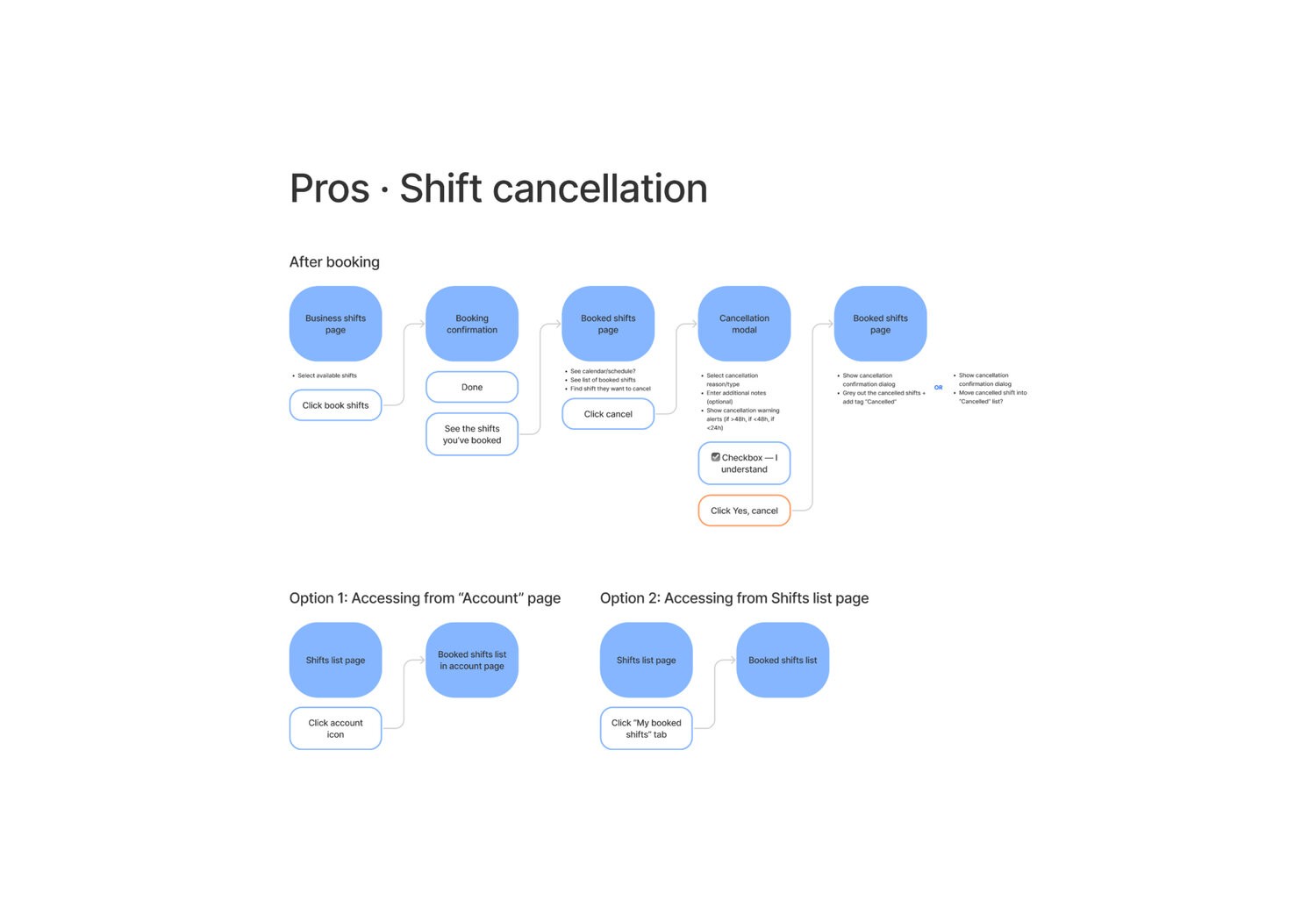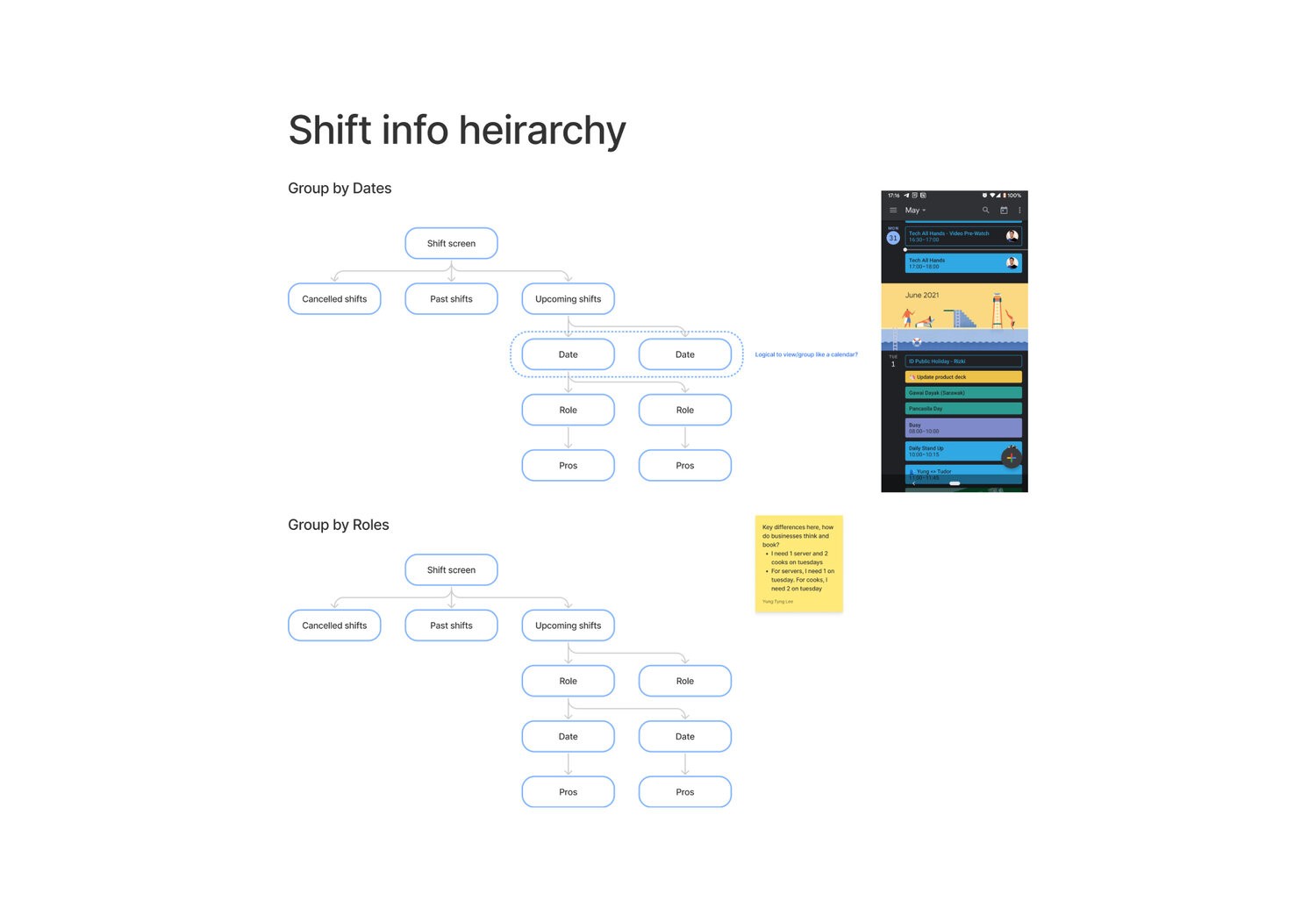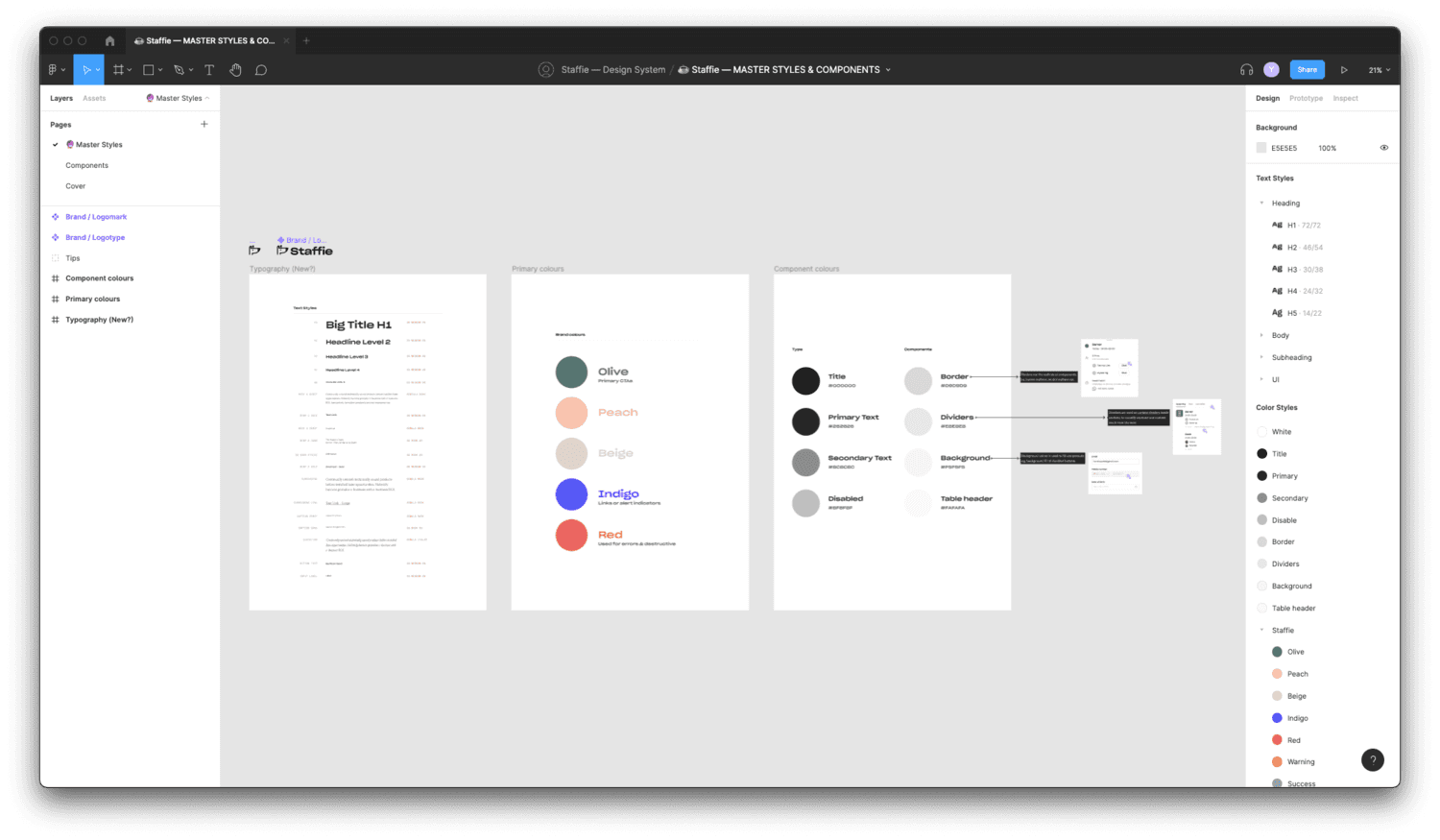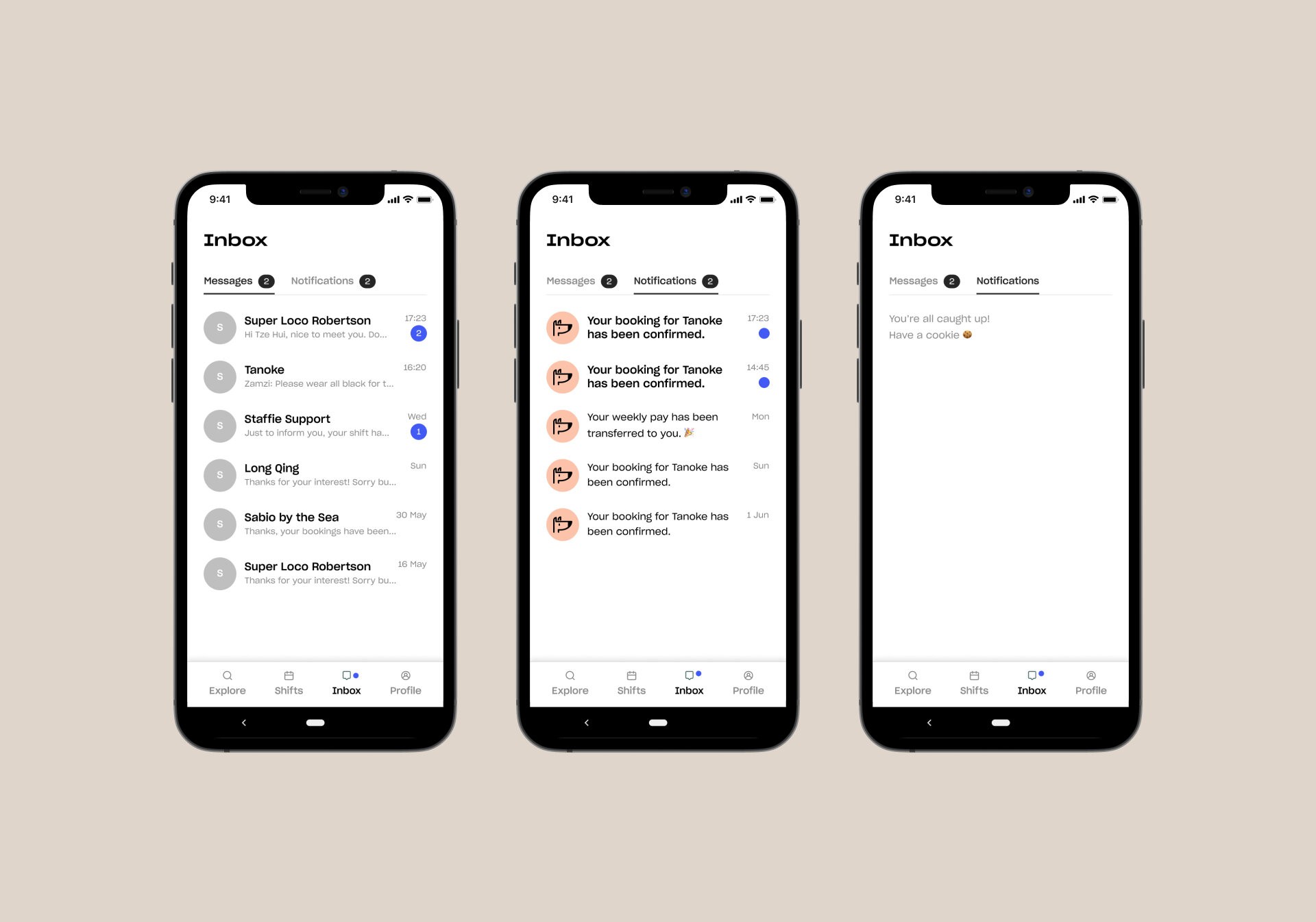Staffie is a two-sided platform connecting F&B businesses looking for part-timers with a qualified network of staff (Staffie Pros) looking for work.
These F&B businesses will post shifts on the Staffie platform, and the Pros get to choose when and where they want to work. Staffie will pay the Pros every week for the shifts they have completed.
Staffie was founded on the goal to solve problems in the F&B gig-based workforce. It makes it simple for more people to pick up ad-hoc shifts for extra income, connecting them with F&B businesses that can now get extra help in a much faster time.
Completion Date
July 2021
Category
Co-founder, Product Design
Sector
Food & Beverage, Technology
Background
Staffie was launched for validation in March 2021. By the final week of April 2021, Staffie hit its first 100 shifts posted a week. By early May, Staffie recorded 113 shifts posted by 19 active businesses, with 78 of those shifts successfully filled by 40 active workers.
As things were poised to grow further, the Singaporean government announced heightened restrictions in response to growing COVID-19 clusters. The lockdown measures took effect from 16 May 2021 through to 13 June 2021, and all restaurant dine-ins ceased.
All shifts from 16 May onwards were cancelled. This also meant zero growth for these four weeks.
Chart comparing filled shifts (blue) and cancelled shifts (orange) over time. Dotted red lines demarcate the hard lockdown period.
Opportunity
The Staffie team anticipated that by Week 4, F&B business managers may start planning for a reopening. This was probably when operations and sales efforts should restart. However, dine-ins are most likely to resume at a slower, phased approach—likely at groups of 3-5 people to start with.
This meant that there was a 3-4 week time block, uninterrupted by operations and sales. It was an opportunity to build the planned Pro and Business mobile apps, as these were the eventual solution to scaling operations.
Problem
Since March 2021, when the first shifts were posted, all operations processes were manually run in their most MVP-like form by:
Tracking signups and shift bookings on Airtable
Letting Pros book shifts on a webpage
Connecting Businesses with Pros through WhatsApp
Sending SMS notifications to Pros via SMS
Borrowing Starcraft II terms, our Ops manager stated he was running out of APMs (Actions per minute)—having to spend most of it on Micro actions such as managing sign-ups, posting shifts, creating group chats, coordinating bookings and cancellations.
While running extremely lean in the early weeks helped validate the idea and acquire leads, things were at capacity by end of April 2021. There were not many APMs left for Macro actions like pulling supply vs demand levers, building new features, and long-term strategy.
Hypothesis
With this in mind, Staffie had to get ready by scaling operations. Having run for 6 weeks, tracking growth metrics, and directly interacting with Pros & businesses—the team had built up a backlog of reasonably defined and validated processes that can be automated. We hypothesised that:
➊
Building an app for Pros
will reduce Twilio reliance and costs, and make it easier to notify Pros of shifts.
➋
Building an app for Businesses
will allow them to communicate with Pros, on the premise that →
➌
Building in-app chat between Pros and Businesses
will remove WhatsApp from the operations process. More importantly, it eliminates the manual effort and time spent managing WhatsApp.
The ops processes “automation tracker”. 🔴 Not automated, 🟡 Partially automated, 🟢 Automated
Proposed solutions
These features and processes were grouped into milestones over the four “lockdown” weeks.
➊
Build parity with the Pro web platform
As a Pro, I can book shifts on my mobile app
As a Pro, I can view and manage my booked shifts
➋
Eliminate Twilio SMS notifications
As a Pro, I am notified when suitable shifts are available on the app
➌
Build the Business mobile app
As a Manager, I can view shifts I have posted
As a Manager, I get notified of successful Pro bookings
➍
Eliminate WhatsApp chats
As a Manager, I can chat with Pros who booked my shifts
As a Pro, I can chat with Managers I’ve booked shifts from
Design Process
Architecture & navigation
Since the team has directly tracked metrics on a weekly basis, paired with the first-hand experience of our Ops manager’s interaction with Pros and Businesses—mapping out the mobile app architecture was a straightforward exercise as we knew the exact features that Pros and Businesses needed.
The team was resolved in minimising the scope to features that will bring maximum impact—so as not to fall into rabbit holes.
Breadboard
As we had progressed incrementally over time, designing and building in response to arising user needs and metrics over the last six weeks—I already had an established set of components and design patterns set up.
The most crucial user steps of booking a shift on the webpage were already designed to be mobile responsive, so it saved valuable time designing the mobile app.
Still, it was good practice to create breadboards of the remaining user flows. This helped align the team before we proceeded with any development.
System for scale
Though the timeline allowed me to design the Pro app before starting on the Business app, I knew I had to design with both applications in mind and plan for scale.
While building the screens for the Pro app, I started compiling every element into a file of master components, variants, and styles. This file acted as Staffie’s lean, early version of a design system.
By the time the Pro app screens were ready for development, I had also completed the screens for the Business app—as it was planned for them to share the same components.
Having spent the time establishing a clear IA and navigation pattern, creating hi-fi prototypes became a relaxing activity.
Deployment
The heightened measures of COVID-19 and cancellation of most shifts had one more bright side — it meant that rolling out the mobile apps was relatively low-risk. The mobile app adoption was projected to closely follow the resuming of F&B business operations, gradually increasing shift bookings, and return of Pro activity.
By mid-July, no more WhatsApp group chats were being created.
Results
Despite another snap lockdown announced to start on 24 July, app adoption for both Pro and Business sides did not face much friction.
Pro activity on the web platform (purple) vs mobile app (orange).
Once restrictions were eased and business started picking up again by August, the number of shifts booked recovered easily. By September, Staffie had reached over 300 weekly active users, and nearly 180 shifts posted a week.
Weekly active Pros on the mobile app over time.
With the right features built to sustain an increase in operations, Staffie could now shift its focus back toward improving Pro activation and booking rates to meet increasing demand.
Scope of Work
Product design
UI/UX design
UX writing
Product Design
Yung Tyng Lee
Development
En Lerk Law
Marx Low
